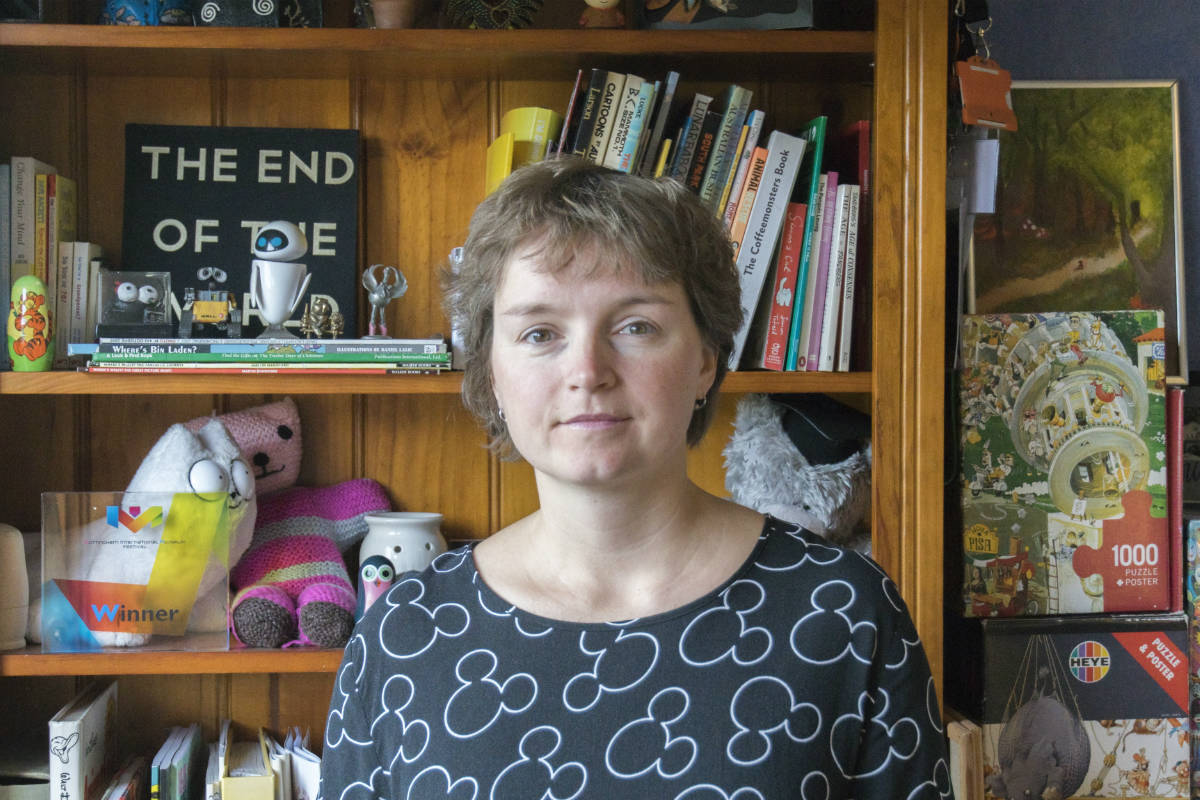Meet the Animation alumna shortlisted for the BAFTA Student Film Awards, Anastasia Dyakova

Victorian College of the Arts graduate Anastasia Dyakova’s film Ready for a Baby has been shortlisted for the BAFTA Student Film Awards. She tells us about being shortlisted, and what’s next up in her animation career.
By Kelly Southworth
Congratulations on your film, Ready for a Baby, being shortlisted for a BAFTA. What is the film about?
It’s about a young woman in her 30s, and everything’s really good – life, partner, work – so she decides to have a baby. She thinks it’s going to be easy and fun, but it’s not. I made the film because a lot of my friends were talking about the problems they were having trying to conceive a baby. I did some research, and I asked around, and the people I spoke to were so happy to be able to share their stories. I think there should be more films out there on this issue.
What was your favourite part of the process of bringing your film to life?
My first two films were almost silent but Ready for a Baby is based on the voice. I was so lucky to have Clarisse Bonello, another VCA graduate, as the voice actor. She did such a great job when we recorded her that I nearly cried. People who saw the movie kept asking me about her.
How was your film shortlisted for a BAFTA?
I didn’t even know it was shown to BAFTA because the VCA submitted it. When I got the call, I thought it might have been a scam! Only three Australian films were shortlisted, two of them were animation, so it’s a real honour.
What does it mean for you as an animator to have your film shortlisted for the BAFTA, as well as winning the Best Animation/CGI at NIM Festival and Best-In Animated Films at USM Husky Film Festival?
I think of myself more as a storyteller. Being shortlisted has given me the encouragement to continue working on my ideas and improving my animation skills, and confidence that I can tell stories people are interested in and can relate to.
What’s next for you?
Right now I’m working on my software skills. At VCA we were given the freedom to choose what program we wanted to use, and I chose a French one called TVPaint. It’s beautiful but it’s not widely used in Australia so it’s hard to find work with. I’m currently learning Flash and I think that’s going to be my big next step in animation.
I’m also working on a live-action film with Tom Kerrigan from the Bachelor of Fine Arts (Film and Television). It’s about “Statman” – a superhero who has the superpower of statistics. Tom wants some animation, and it’s a new style for me that I’m really excited about.
Are there other themes you’re interested in exploring in your work?
I’m really interested in death. My second film from VCA is about how children can’t fully understand death, but they can feel it on a different level. One of my ideas is about my friend who died about ten years ago. It shattered me – but from an artist’s point of view, it’s a great opportunity to create a story based on something so important and touching. It’s not something everyone likes to talk about, but I want to explore pain because even though it hurts, it’s important to feel. You can’t be a good artist without feeling.
Did your Bachelor of Fine Arts (Animation) prepare you for a career in filmmaking?
Definitely. I’d never drawn until I moved to Australia four years ago. I did a drawing short course where I was able to try TV, animation and design, and I realised I wanted to do the VCA’s animation course. VCA helped me to believe in myself, helped me build my software skills and taught me how to work with my ideas. I’m so grateful to my teachers Paul Fletcher and Robert Stephenson for everything they did for me.
Do you have any advice for other graduates?
If you want to work for a particular studio, check what software they use and what style of work they produce. Your films are your resume, so prepare them in the style of the studio, but only if it doesn’t affect your work. If it does, forget it! And trust yourself, even if other people say it’s terrible – if you believe in it, you’re probably right. Something I’ve learned is that you should make things for yourself; do whatever you like and other people will join you on the way. It’s not for other people, it’s for you.
What do you enjoy outside of animation?
I love my husband, I love my dog, and I love puzzles. I’m so lucky and grateful to my husband, who’s really supportive of my animation career. I’m also a part of Women in Film and Television (WIFT), which is a great opportunity to network and be surrounded by people who have the same interests. It’s very comforting to have this association of other women in my field where we can just talk about stuff. We need to stick together and we need to work hard.